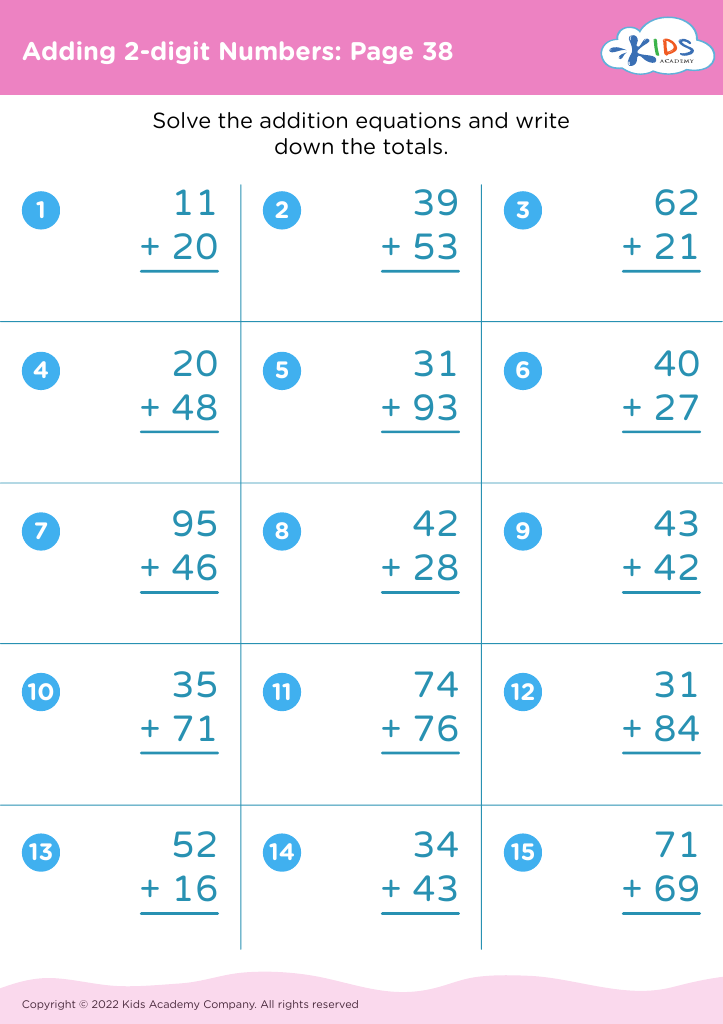Animal recognition Math Worksheets for Ages 7-9
8 filtered results
-
From - To
Discover the engaging "Animal Recognition Math Worksheets for Ages 7-9" designed to make learning math fun and accessible for young learners. These interactive worksheets combine essential math skills with the exciting world of animals to captivate children's interests. Boost your child's counting, addition, subtraction, and pattern recognition abilities while they enjoy recognizing different animals. Perfect for classroom activities or homeschooling, our worksheets offer a unique, engaging approach to math, fostering both educational growth and a love for the natural world. Download these resources today to help your child excel in math while exploring their passion for animals!
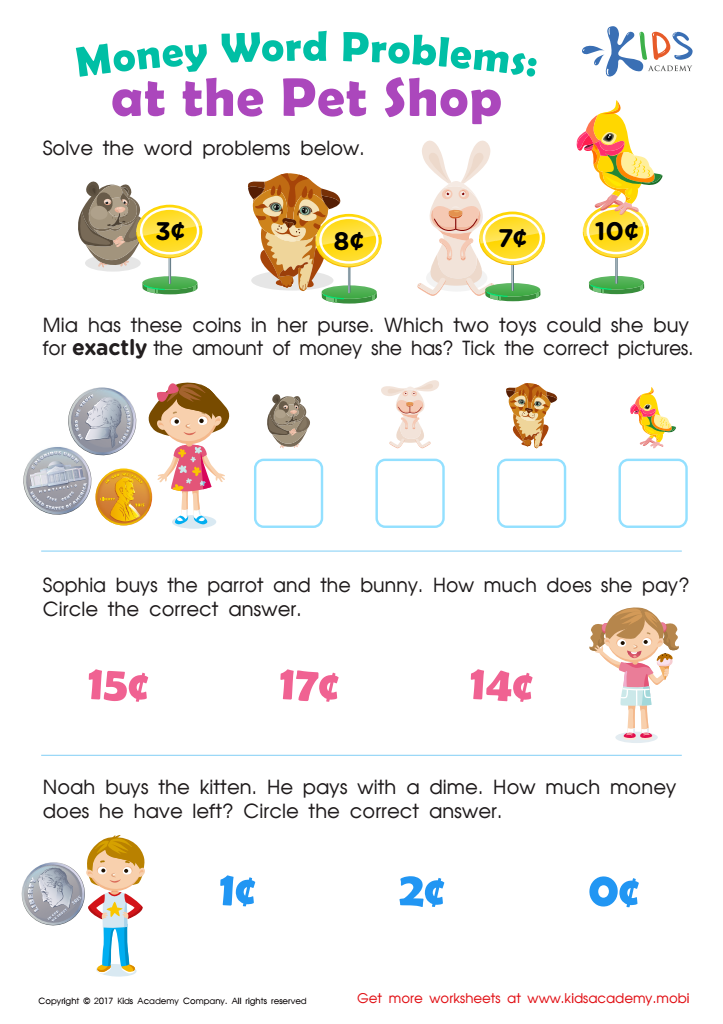

Pet Shop Worksheet


Animals of Amazon Worksheet
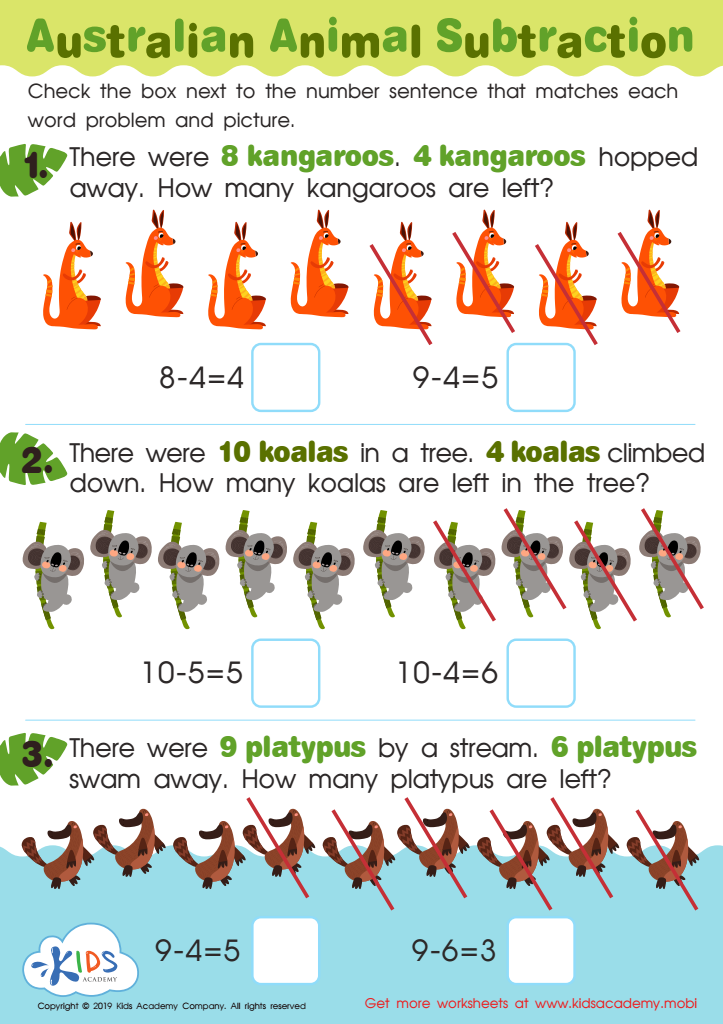

Australian Animal Subtraction Worksheet
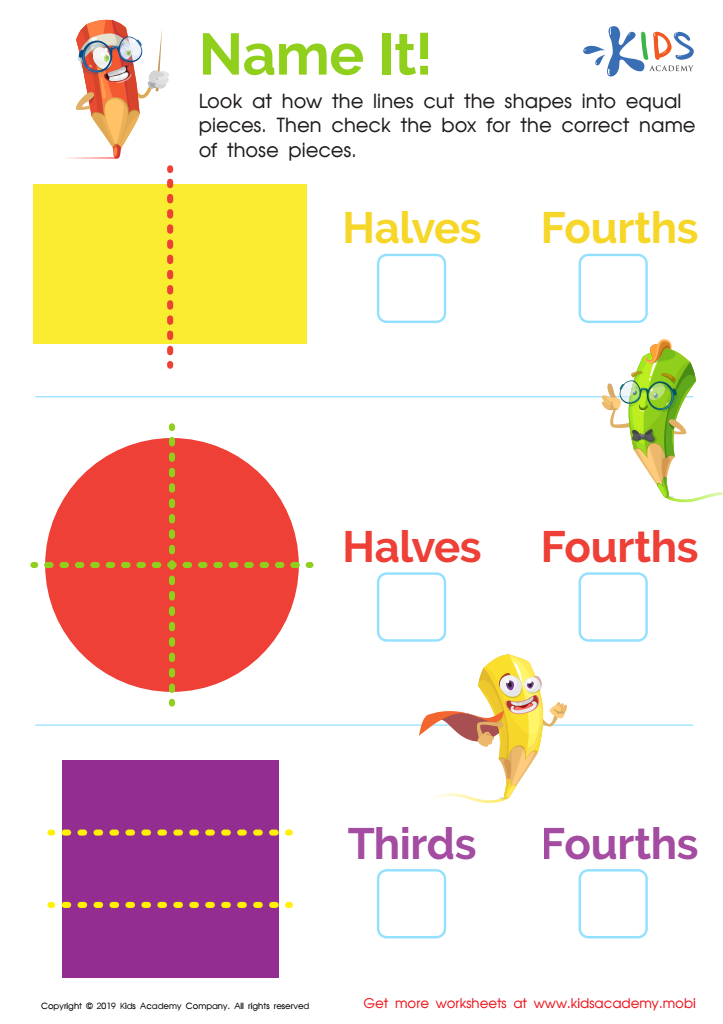

Name It! Worksheet


Addition at the Zoo Worksheet
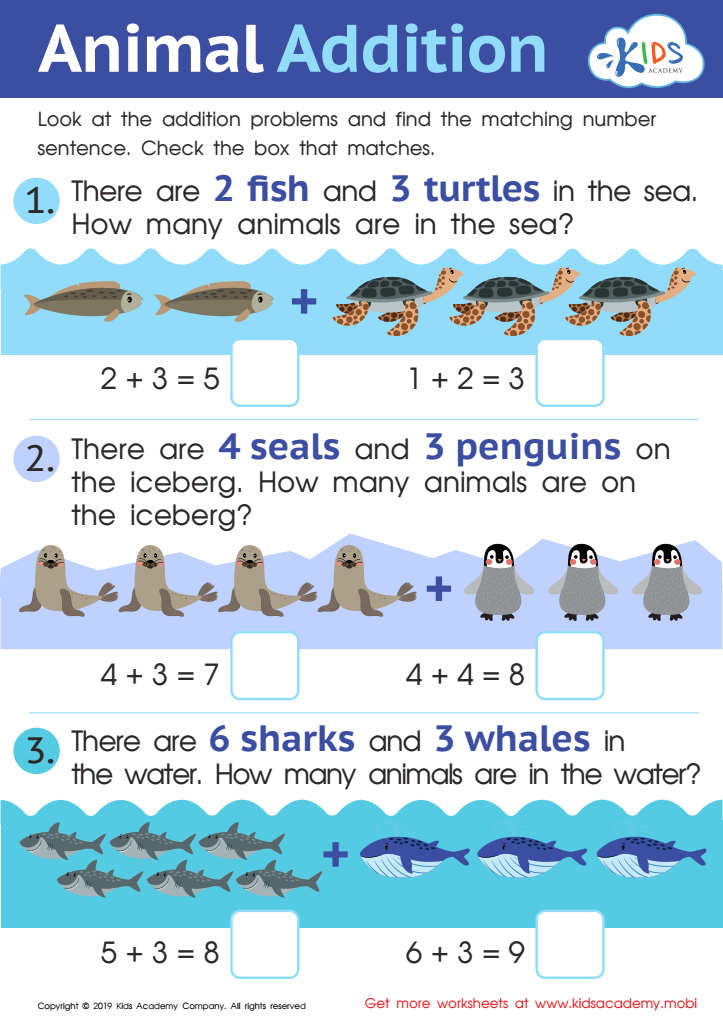

Animal Addition Worksheet
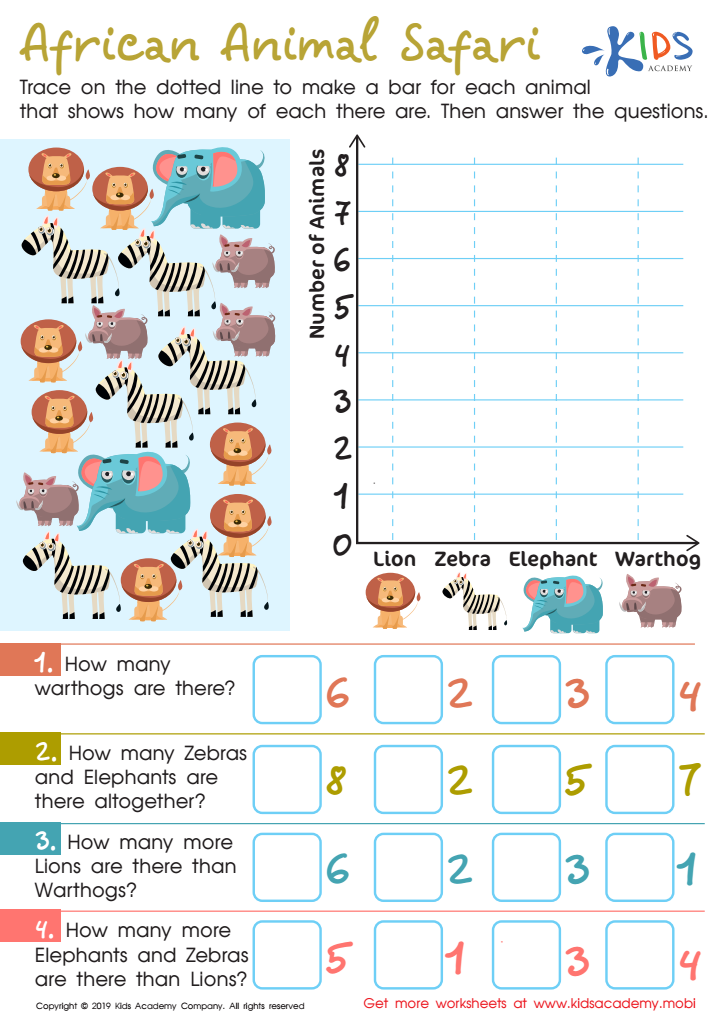

African Animal Safari Worksheet
Animal recognition math for children aged 7-9 blends the cognitive abilities involved in mathematics with the engaging elements of animal identification. Parents and teachers should prioritize this approach because it thoughtfully merges fun with education, fostering a rich, multi-faceted learning environment.
At this developmental stage, children have a natural curiosity about both animals and numbers. Integrating these interests, animal recognition math can heighten engagement and motivation. This kind of interdisciplinary learning helps children develop critical thinking skills as they categorize, compare, and contrast different animals and their attributes, simultaneously practicing math concepts like counting, measuring, and pattern recognition.
Additionally, it caters to a variety of learning styles. Visual learners will benefit from the vivid imagery, while tactile and kinesthetic learners will engage through hands-on activities, such as sorting animal figurines or creating graphs. This inclusiveness ensures that all children can participate and succeed, building confidence as they master foundational math skills in an enjoyable context.
Moreover, these activities foster teamwork and social interaction. Students can work in groups, facilitating communication and collaboration skills which are crucial for their overall development. Thus, combining animal recognition with math fosters a holistic learning experience, enhances engagement, and supports diverse learning needs, making it an effective educational strategy for early graders.
 Assign to My Students
Assign to My Students

